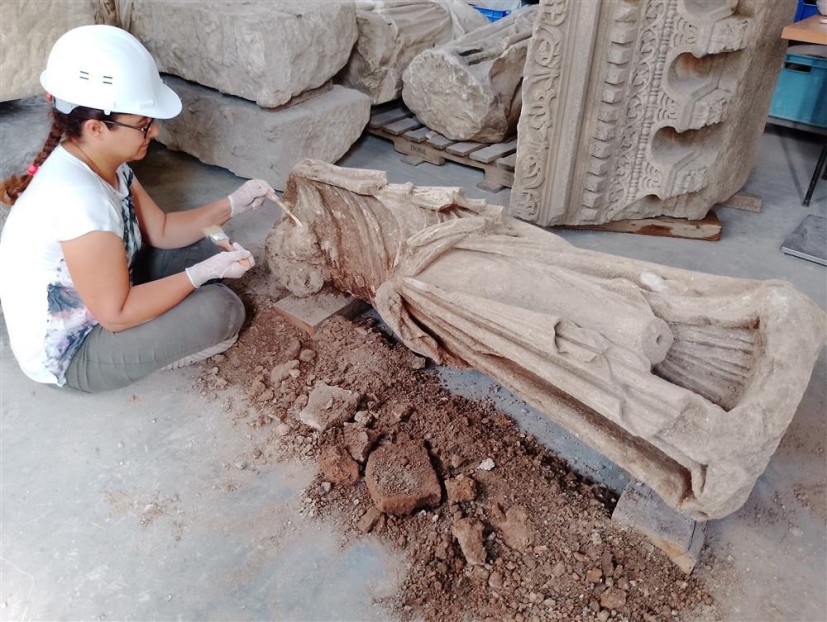
A 2,175-year-old statue of a "Dancing Muse," believed to be depicting one of Zeus' daughters, has recently been discovered by archaeologists working on the site within the ancient city of Stratonikeia. Also known as the city of eternal loves and gladiators, Stratonikeia is located in the modern-day province of Muğla in Turkey.
According to a Dec. 7 statement by the Republic of Turkey's Ministry of Culture and Tourism, the archaeological team stationed in the city was investigating its ruins when they came across the body and platform of the statue that was strewn across a dilapidated Roman bathhouse. Currently, the original statue is missing its head and arms, with its sculpted cloak remaining intact.
In the release, the ancient sculpture is dated to be from the Hellenistic Period and is thought to have been crafted by the Greek sculptor Philiskos, who boasted great public renown around the 2nd century BC for his works made to the likeness of Zeus and Mnemosyne, parents of the "Dancing Muses."
Before this discovery, only imitations of the statue that was made during the Roman Era had been found, with two of these copies currently kept in Anatolia and Greece.
History of the Ancient City of Stratonikeia
The area encompassing Stratonikeia has been constantly populated for over 3,500 years since 1500 BC, as per UNESCO's report on the ancient site. In the present day, a village called Eskihisar now spans across some parts of the site.
During the Hittite Period that happened between 1650 to 1180 BC, the area acted as a settlement dubbed "Atriya" and was inhabited by the ancient Anatolian people called Hittites. By the third century BC, the settlement was renamed Stratonikeia when several Greek kingdoms, comprising the Ptolemies and the Macedonians, occupied it.
Afterward, in the second century BC, the ancient city eventually became part of the Roman Republic up until the later parts of the 13th century AD, when it fell under the control of the Ottoman Empire.
Stratonikeia is considered an important site of cultural heritage due to the numerous antiquities that were found within it, endowing it with a world-renowned reputation as the largest ancient city made out of marble.
The statue found within this ancient site is currently being restored and is set to be exhibited at the Muğla Museum.